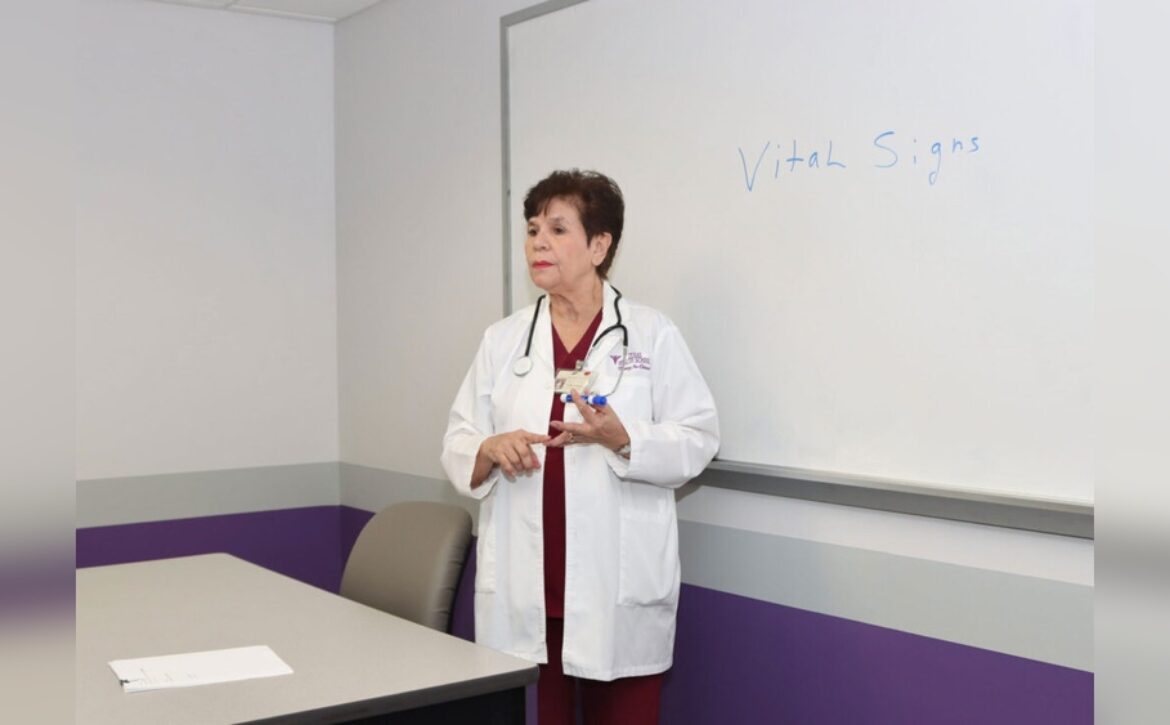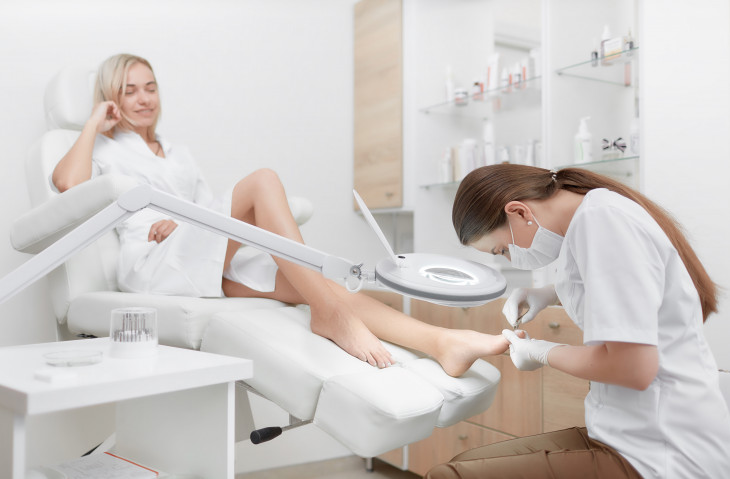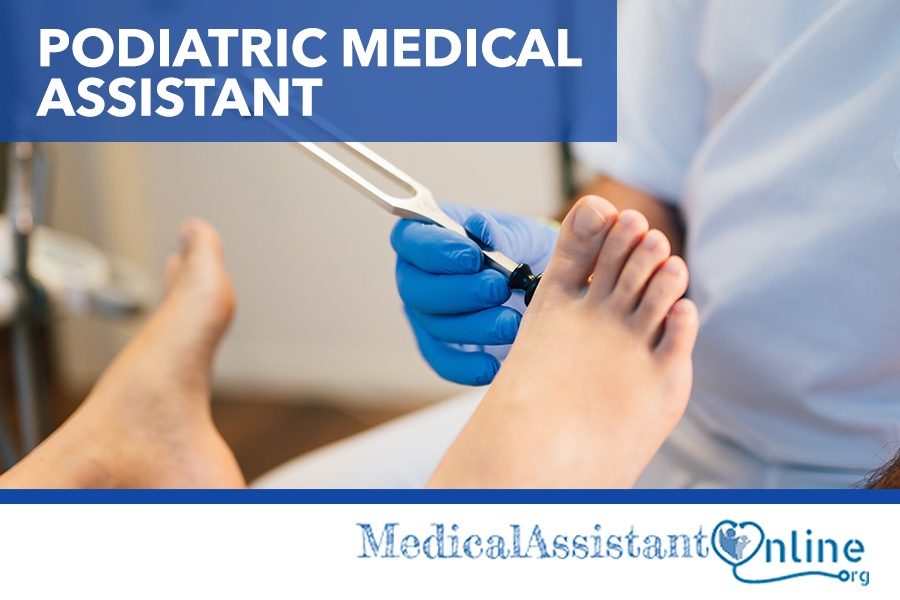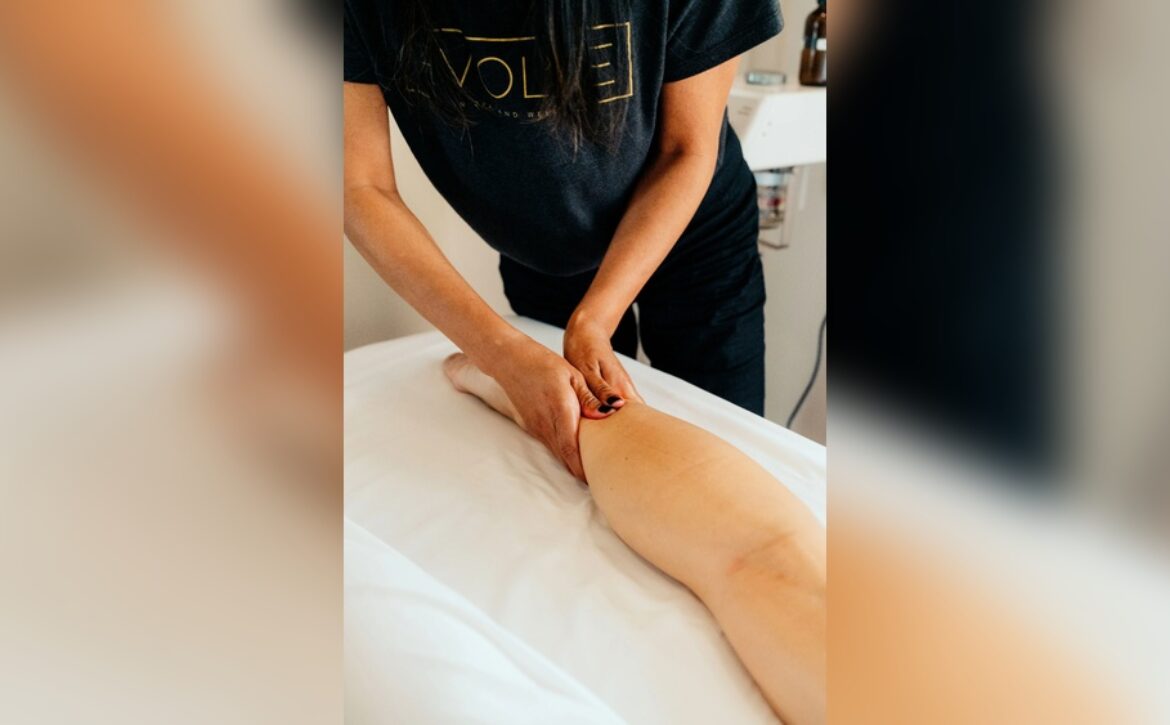
How to Become a Podiatry Course: Step-by-Step Guide
Are you fascinated by the intricate workings of the human foot? Do you find yourself curious about how podiatrists diagnose and treat foot ailments?
If so, you’re in the right place. Discovering how to become a podiatrist could be the perfect path for you, combining your interests with a rewarding career. In this guide, you’ll uncover everything you need to know about podiatry courses, from selecting the right program to understanding the skills and knowledge you’ll gain.
Imagine yourself transforming lives, one step at a time, while enjoying a fulfilling professional journey. Let’s dive in and explore how you can take the first steps towards a career in podiatry.

Choosing The Right Podiatry Program
Choosing the right podiatry program is crucial for your future career. The right program sets the foundation for your professional journey. It’s important to consider various aspects before making a decision.
Accreditation Considerations
Accreditation ensures the program meets set standards. Verify the program is accredited by recognized bodies. This guarantees quality education and is crucial for future licensing. An accredited program enhances your job prospects.
Program Specializations
Explore different specializations within podiatry. Some programs offer unique areas of focus. Consider what aligns with your career goals. Specializations can include sports medicine, surgery, or diabetic care.
Location And Facilities
Location can impact your study experience. Consider programs close to home or in preferred areas. Evaluate the facilities offered by the institution. Modern labs and clinics can enhance learning. Access to the latest technology is vital for practical skills.
Preparing For Admission
Embarking on the journey to become a podiatrist is an exciting adventure. It’s a path filled with opportunities to make a real difference in people’s lives. But before you can dive into the world of foot and ankle health, you need to prepare for admission into a podiatry course. This preparation is a crucial step, and it involves understanding prerequisite courses, entrance exams, and the application process.
Prerequisite Courses
Before you apply to a podiatry program, you’ll need to complete certain prerequisite courses. These are essential subjects that lay the foundation for your future studies. Typically, they include biology, chemistry, and physics.
Many schools require you to have a solid grasp of these sciences. It’s also beneficial to take courses in anatomy or physiology. These will give you a head start in understanding the human body.
Are you wondering how to fit these courses into your schedule? Consider summer classes or online options to keep your workload manageable. Planning is key, so check the specific requirements of the schools you’re interested in.
Entrance Exams
Entrance exams are another hurdle on your path to podiatry school. Most programs require the Medical College Admission Test (MCAT). This exam tests your knowledge of scientific concepts and critical thinking skills.
Preparing for the MCAT can be daunting, but it’s achievable. Create a study schedule that allows you to cover all topics thoroughly. Use practice tests to identify areas where you need improvement.
Don’t underestimate the importance of test prep courses. These can provide invaluable insights and strategies for the exam. Plus, they often offer a community of fellow test-takers, adding support to your study process.
Application Process
The application process is your chance to shine. It’s where you showcase your academic achievements and personal qualities. Start by gathering your transcripts and letters of recommendation.
Craft a compelling personal statement that highlights your passion for podiatry. Share experiences that demonstrate your commitment to the field. What motivated you to pursue this career?
Be mindful of deadlines and requirements for each school. Organize your application materials early to avoid last-minute stress. Have you considered reaching out to current students or alumni for advice? They can offer valuable insights and tips.
Preparing for admission to a podiatry course is a journey in itself. With dedication and strategic planning, you’ll set the stage for a rewarding career in podiatry. Are you ready to take the next step?
Navigating The Curriculum
Embarking on a podiatry course is an exciting journey that opens doors to a fulfilling career in foot and ankle health. Navigating the curriculum can be a thrilling yet challenging experience, requiring a balance between theoretical knowledge and practical skills. Understanding the course structure is crucial to ensure you gain the most from your education. Let’s dive into the key components of the podiatry curriculum that will shape your path to becoming a skilled podiatrist.
Core Subjects
The foundation of any podiatry course lies in its core subjects. These subjects cover essential topics like anatomy, physiology, and pharmacology. Imagine learning about the intricate structures of the foot and how they relate to the rest of the body.
These subjects are not just about memorization; they foster critical thinking. You’ll engage in discussions and problem-solving activities that mimic real-life scenarios. This approach prepares you for the complexities of diagnosing and treating foot conditions.
Think about it: how does understanding the body’s mechanics affect your approach to podiatry? This question will drive your curiosity and deepen your learning.
Clinical Rotations
Clinical rotations are where theory meets practice. Picture yourself in a clinic, applying what you’ve learned in a real-world setting. These rotations provide hands-on experience under the guidance of experienced professionals.
You’ll encounter diverse cases, from common foot ailments to complex surgeries. Each rotation challenges you to adapt and grow, enhancing your confidence and competence. This practical exposure is invaluable for honing your skills.
Consider how interacting with patients can improve your communication skills. It’s not just about treating the condition, but also about understanding and empathizing with the person behind it.
Elective Courses
Elective courses offer a unique opportunity to tailor your education to your interests. Whether you’re passionate about sports medicine or diabetic foot care, electives allow you to delve deeper into specialized areas.
These courses provide flexibility and enable you to expand your expertise beyond the core curriculum. They can also open doors to niche career paths within podiatry.
Reflect on your interests: What areas of podiatry excite you the most? Choosing the right electives can shape your future career and set you apart in the field.
As you navigate the podiatry curriculum, remember that each component plays a vital role in your development. Embrace the challenges and opportunities that come your way, and you’ll emerge as a well-rounded, knowledgeable podiatrist ready to make a difference in your patients’ lives.
Gaining Practical Experience
Embarking on a journey to become a podiatrist is both exciting and challenging. Gaining practical experience is crucial to mastering the skills needed for a successful career in podiatry. This hands-on learning complements theoretical knowledge and prepares you for real-world scenarios. But how do you get this invaluable experience? Let’s dive into some practical ways to enhance your podiatry training.
Internships And Externships
Internships and externships offer you a chance to work closely with experienced podiatrists. You observe and participate in clinical practice, learning directly from the experts. Whether it’s a summer internship at a local clinic or an externship during your course, these opportunities are golden. They not only enhance your clinical skills but also boost your confidence in a professional setting.
Consider reaching out to hospitals or clinics that specialize in podiatry. They often have openings for students eager to learn. Don’t hesitate to ask about the tasks you will be involved in. Knowing what to expect helps you prepare better and make the most of your experience.
Research Opportunities
Participating in research projects can significantly enrich your understanding of podiatry. It allows you to delve into specific areas and contribute to advancements in the field. Look for research programs at your university or online platforms that offer collaborative projects.
By engaging in research, you develop analytical skills and deepen your knowledge. You might discover new techniques or therapies that could revolutionize patient care. Imagine the impact you could make by being part of groundbreaking discoveries in foot health!
Networking With Professionals
Building a network of professional contacts can open doors to numerous opportunities. Attend podiatry conferences, seminars, and workshops. Engage in discussions and don’t shy away from asking questions. You’ll be surprised at how approachable and willing to help seasoned professionals can be.
Networking isn’t just about getting your foot in the door; it’s about learning from others’ experiences. You might hear a story from a podiatrist that changes your perspective or learn a tip that saves you time. Have you ever thought about how many doors a simple conversation can open?
In your quest to gain practical experience, remember that every step you take brings you closer to becoming a proficient podiatrist. Dive into these opportunities with enthusiasm and curiosity. The skills and insights you gain will be invaluable in your career journey.
Licensing And Certification
Licensing and certification are crucial steps in becoming a podiatrist. They ensure that professionals meet essential standards. This process guarantees quality care for patients. Becoming licensed involves several stages. Understanding each stage helps you navigate your career path smoothly.
Exam Requirements
To earn your podiatry license, you must pass the national board exam. This exam tests your knowledge and skills. It covers anatomy, medical procedures, and patient care. Proper preparation is key. Many study guides and courses can help you succeed.
State Licensing Procedures
Each state has its own licensing rules. You must check specific requirements for your location. Most states require passing both national and state exams. Some states may ask for extra training or experience. Always verify with your local board.
Continuing Education
Once licensed, continuing education is essential. It keeps you updated on new treatments and technologies. Many states require ongoing education for license renewal. Workshops, seminars, and online courses are great options. They help maintain your skills and knowledge.

Building A Career In Podiatry
Starting a career in podiatry is a rewarding journey. This field offers a chance to improve people’s lives. Podiatrists specialize in foot and ankle care. Their work is essential for overall health. With the right steps, you can thrive in this profession.
Job Search Strategies
Begin by researching potential employers. Hospitals, clinics, and private practices hire podiatrists. Networking is crucial. Attend professional events and join online forums. Connect with mentors in the field. Craft a strong resume. Highlight relevant skills and experiences. Tailor each application to the specific job.
Specialization Options
Podiatry offers various specialization paths. Consider sports medicine for athletic foot care. Explore diabetic foot care for managing chronic conditions. Surgery specialization involves complex procedures. Choose a path that aligns with your interests. Specializing can enhance your career opportunities.
Professional Development
Continual learning is vital in podiatry. Attend workshops and conferences regularly. Stay updated with the latest research and techniques. Join professional associations for networking and resources. Consider further certifications. They can boost your credibility and expertise. Dedication to growth can lead to success in podiatry.

Frequently Asked Questions
What Is A Podiatry Course?
A podiatry course provides education on foot and ankle care. It covers anatomy, pathology, and treatment techniques. Students learn through lectures, labs, and clinical practice. The course prepares individuals for a career in podiatric medicine.
How Long Does Podiatry Training Take?
Podiatry training typically takes four years. This includes classroom learning and clinical experience. Afterward, graduates may complete a residency program. This additional training lasts two to three years.
What Qualifications Are Needed For A Podiatry Course?
To enroll in a podiatry course, you need a bachelor’s degree. Prerequisite courses in biology, chemistry, and physics are essential. Some programs require healthcare experience. Check specific program requirements for details.
Are Online Podiatry Courses Available?
Online podiatry courses are rare due to hands-on training needs. Some programs offer online components. These may include theoretical coursework. However, clinical practice must be completed in person.
Conclusion
Pursuing a podiatry course can be a rewarding journey. You gain knowledge about foot health and patient care. Start by researching accredited programs that fit your needs. Consider factors like cost, location, and course length. Contact schools to gather more information.
Prepare well for entrance exams if required. Dedication and hard work are key in this field. A career in podiatry offers many opportunities. You can help people live healthier lives. Remember, every step you take brings you closer to your goal.
Embrace the learning process and enjoy your path to becoming a podiatrist.





